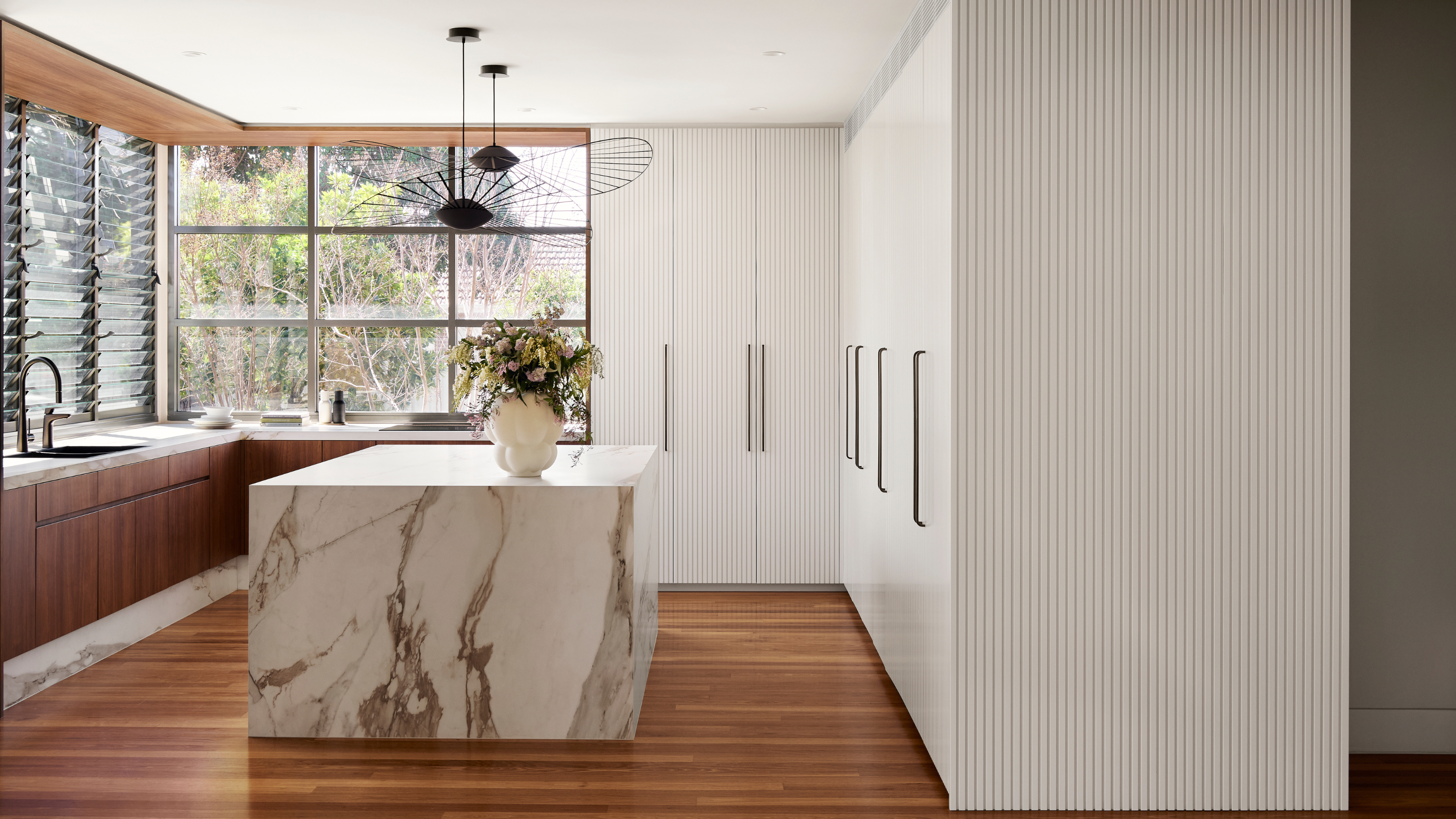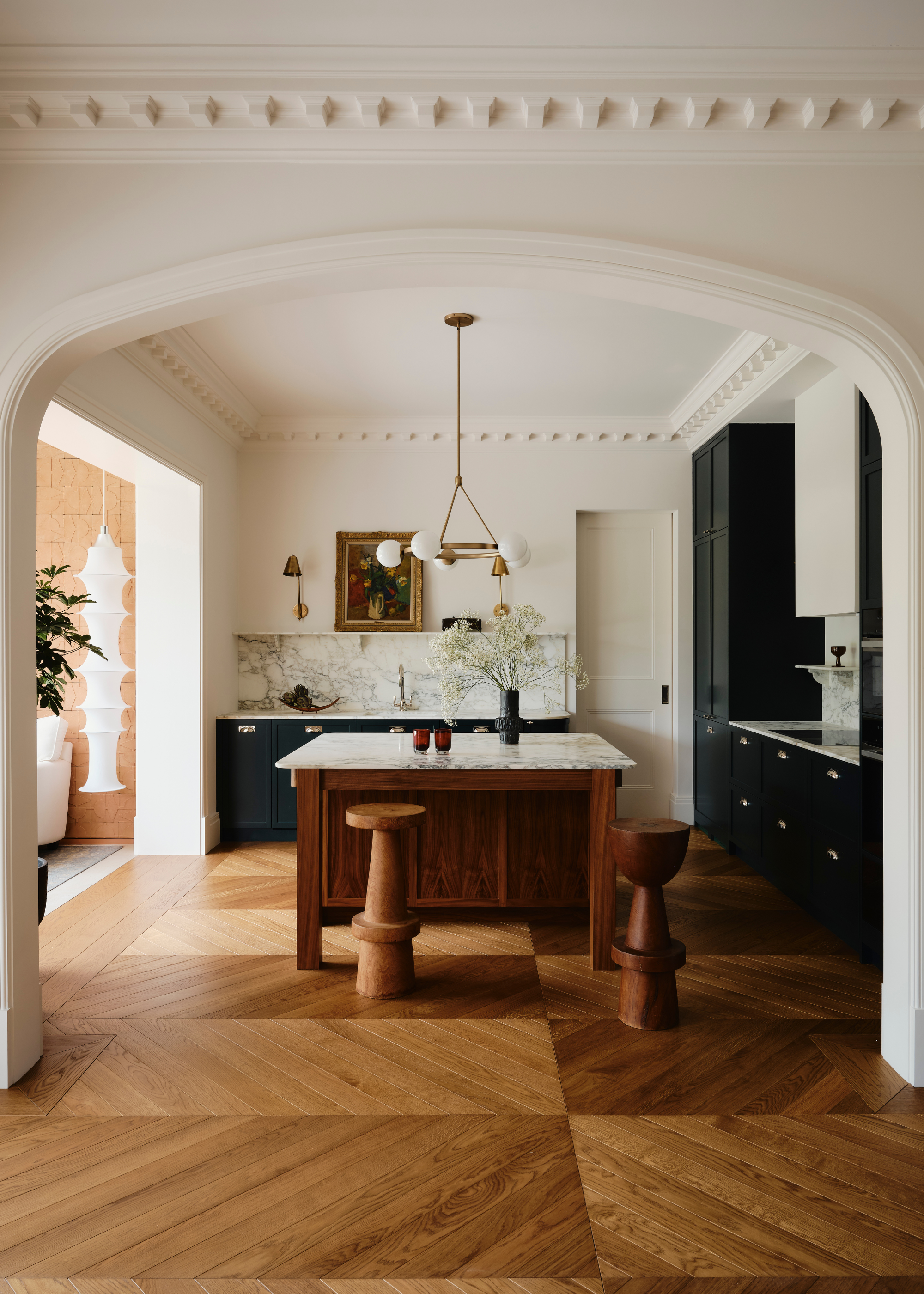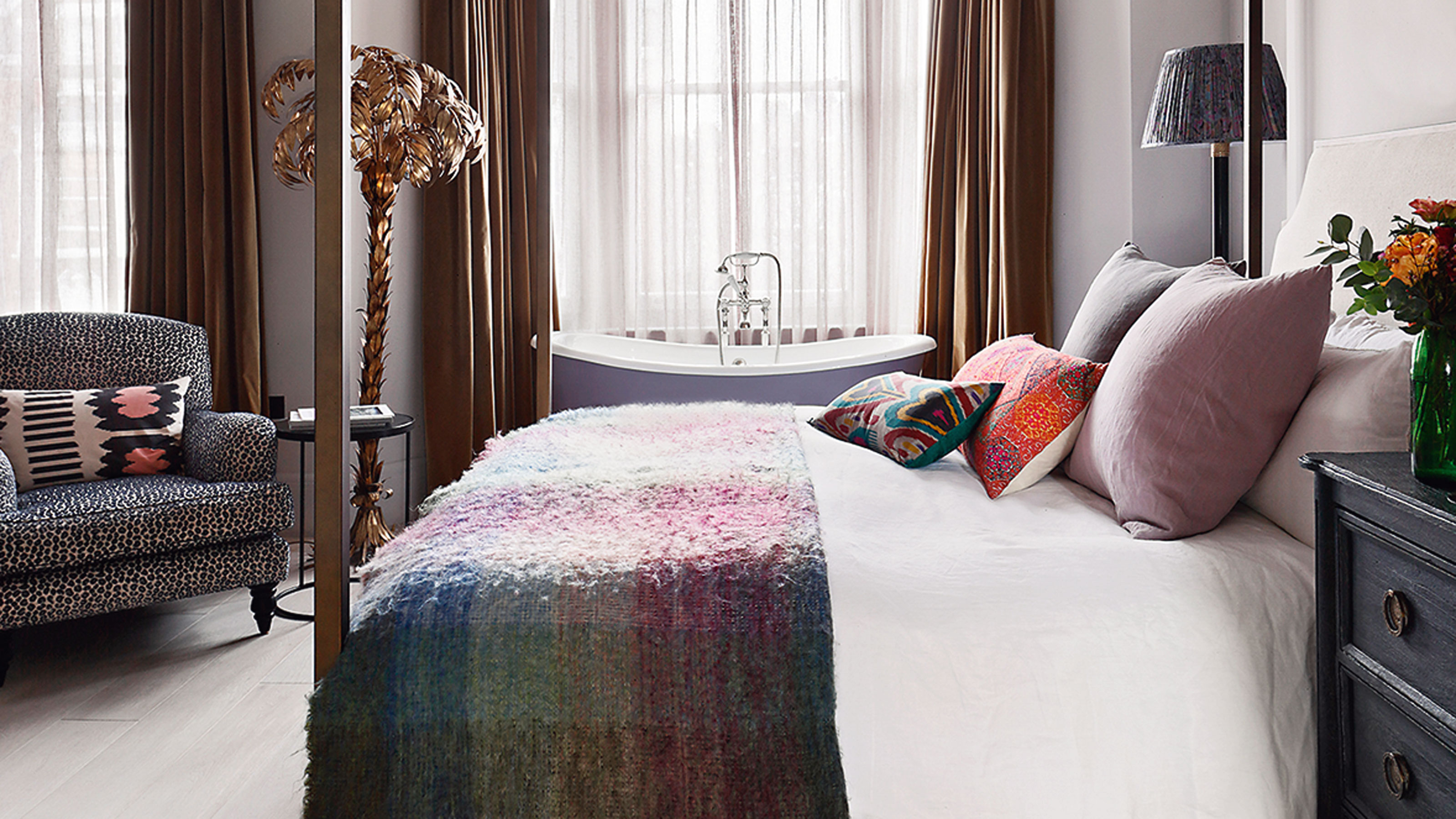
One of the things that stressed me out the most when I was moving house last month was the thought of moving my furniture. Getting large pieces out of the door while trying to prevent them from dragging against the wall or hitting the door frame worried me, as I didn't want to damage the furniture itself or the walls and floors of either home.
Ultimately, my worry was unwarranted, and everything turned out fine. I believe this was the case because I took the time to do my research and learn about moving tips before shuffling my furniture around.
To help you keep furniture from damaging your home's walls and floors, I consulted professional movers and organizers with moving services for their recommendations on moving furniture cautiously and successfully. If you follow these useful tips and tricks, your furniture, walls, and flooring will be in safe hands.
Why It's Important to Protect Your Walls and Flooring

As Lydia Zub of Local Motion Movers notes, "When moving furniture, it is crucial to be careful with the walls and floors to eschew costly repairs. To prevent any damage to these surfaces, it is advisable to take protective measures and move furniture items thoughtfully."
By following the five methods outlined below, you'll significantly limit the chances of causing any damage to your home's walls and floors.
1. Move Your Furniture Patiently and Thoughtfully

Let's face it: most of us don't want to prolong the experience of moving house. Our moving house checklist is already long enough and if given the choice, we would snap our fingers and happily teleport all of our stuff from point A to B.
Doing what you can to remain level-headed and patient, making yourself and the environment for your professional movers calm, is one of the simplest yet most effective ways to ensure your furniture is moved safely without harming the surrounding walls or the floor.
Ben Soreff, professional organizer and partner of House To Home Organizing, says, "Since most people don't want to move furniture, people tend to move it too quickly and without planning. The only time I have ever seen furniture damage walls or floors is when people are rushing and simply not paying attention."
Matt Graber, owner and operator of Cool Hand Movers based in NYC, echoes this, saying, "Be careful not to overthink things, because sometimes we end up creating more potential liabilities the more equipment we add to a given project. More important than laying down floor protection when you are moving a piece of furniture is paying attention to what you are doing and just being careful."
If you're moving items yourself, make sure to begin the process in a timely manner so you don't have stressful time constraints that add extra pressure. Taking frequent breaks can help to relieve tension, too.
2. Measure Doorways Before Moving Anything

I can completely relate to the feeling of wanting to do nothing but disassemble your furniture. It takes more time and effort, and since you have a spacious van anyway, it'll fit in the vehicle with no problem. However, that doesn't necessarily mean the furniture will fit through your door frame, and attempting to force large items like bedroom furniture (spoiler alert: my bed wouldn't fit through the door) will only cause damage.
Ben says, "Take the time to breathe and measure, especially the doorways. If you guess and start moving items with an "I think it will fit" attitude, then that is a surefire method for damage."
Debra Baida, owner of Liberated Spaces, agrees, adding, "We are not accustomed to moving large things in and through the three-dimensional space around us on a regular basis, so being mindful when navigating doorways, hallways, and stairs is key to preventing damage. It is all too easy to scrape the paint, knick the molding, gouge drywall, or poke holes in walls if care is not taken when moving any piece of furniture. And yes, even when moving a lightweight folding chair!"
If you don't already own a compact tool kit like the Amazon Basics 142-Piece Sturdy Household Tool Kit, I highly recommend getting one. It'll make disassembling items a breeze and is bound to come in handy as you customize your home.
3. Line Your Hallway With Towels or Blankets

A quick way to protect your modern home and floor from scratches or dents is to lay spare blankets or towels over it. This way, regardless of whether your furniture pieces are being pushed, wheeled, or carried along when they are set down against the floor, there's a barrier between the item's legs and your home's surface.
Lydia says, "You can use rugs or mats as runners to protect the floor from scratches and the carpet from dirt, especially when it is raining or wet outside. Movers usually do not take off their shoes while working for safety reasons so dirt might make its way into your house."
Just be mindful of what materials you're combining; for instance, blankets on a shiny floor will create a slippery trip hazard.
4. Use Furniture Dollies

I hadn't heard of a furniture dolly before talking to Lydia, but it looks a little like a skateboard. Your furniture sits on it, making it easier to move around because it's on wheels. These wheels are far less likely to damage your floor than dragging furniture pieces around manually.
"Furniture dollies allow the weight of your furniture to evenly distribute and makes pieces easier to move around without scratching walls or flooring in the process," says Lydia.
The Furniture Mover Pro Furniture Dolly on Amazon rotates 360° and has non-slip rubber wheels to ensure your items stay as safe as possible during transportation.
Lydia recommends securing heavier furniture with bungee cords and protecting more fragile pieces with thick moving blankets. The Cartman 32 Piece Bungee Cords Assortment Jar combined with the Simpli-Magic Heavy Duty Padded Moving Blankets, both from Amazon, will do the trick.
5. Use Furniture Sliders

Furniture sliders are a nifty little tool that can really pack a punch in improving your moving experience. Often shaped like a disc, you simply place one slider under each leg of your furniture and the disc will glide across your flooring instead of scratch, making your pieces easier to move as well as less stressful to transport.
However, if you opt for this method, it's important to remember that the sliders can't glide on the carpet and could potentially trap dirt and debris, which could scratch your floor.
"In my experience, I have seen the plastic bottom furniture sliders trap pebbles and small items underneath and damage floors. A towel or piece of cardboard often works just as well as furniture sliders," says Ben.
If you're looking to try out a furniture slider for moving house or just moving furniture around your space while decorating a rental, Amazon's choice Felt Furniture Sliders for Hardwood Floors are a great option to consider.
FAQs
Are Furniture Sliders a Good Idea for Moving Furniture?
Furniture sliders are a great option for many light to mid weight standard home furniture pieces. However, if you're trying to move particularly heavy, fragile, or irregularly shaped items, they might not be pieces that are best suited to sliding.
Lydia Zub of Local Motion Movers, says, "Most of the time furniture requires lifting. Not all furniture can be slid. It is indispensable to take into account the type of furniture, its weight, and floor type to ensure that it is safe. For instance, furniture sliders might not be effective when movers have obstacles on their ways, such as stairs. Furniture sliders might not work with uneven floors and carpet. It will not work with fragile furniture (e.g. glass furniture). It is important to pay attention to the legs of the furniture, not all furniture can be slid (e.g. irregularly shaped legs). You will not be able to slide a grand and upright piano, for example. This extra heavy furniture requires a special equipment, such as a piano dolly and professional moving techniques."
Matt Graber, owner and operator of Cool Hand Movers based in NYC, shares with us how he personally prefers to move furniture: "I like to slide furniture on a heavy moving blanket, the kind that we keep in moving trucks, but you can also buy or rent furniture blankets. Often, you can turn a piece of furniture, such as a dresser, on its side and on a blanket and just slide it wherever you need to while holding the blanket so that it doesn't get bunched up underneath or slip out from under the piece of furniture."
Moving furniture is not an easy task, which is why having the right tools at hand, as well as an extra helping hand, is important. When moving furniture, you can also opt to lay something on the ground to protect your flooring from getting scratched.
We like these Felt Furniture Pads priced at just $9.99 from Amazon, or these Furniture Pads 9 Pieces 8" x 6", also priced at $9.99 from Amazon. Add these onto your flooring or furniture and trust us, it will protect and prevent scratched from making their way onto your beloved home.







